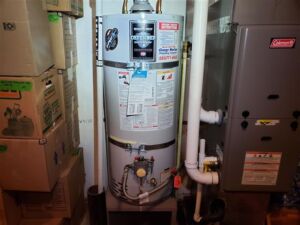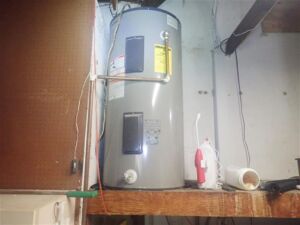
The potential for a large-scale earthquake affecting the Pacific Northwest has been brought to light in recent years. There is a large fault off the west coast that runs approximately 600-miles from Northern California to British Columbia. This fault is called the Cascadia Subduction Zone. The earth’s crust is comprised of large slabs of rock called tectonic plates. These plates are constantly moving, and an earthquake occurs when adjacent plates come into contact with each other or one plate slides below another.
In the Cascadia Subduction Zone, the Juan De Fuca Plate is subsiding under the Noth American plate. Scientists are predicting that there is a 37 percent chance that a large-scale earthquake will occur within the next 50 years. This earthquake could reach a magnitude of 7.1 or more. A magnitude 9 earthquake could cause a tsunami with 100-foot waves on the coast and would be felt throughout the Pacific Northwest. Even if this earthquake was a fraction of the size of what is predicted it could have catastrophic consequences.
One way to protect your home during an earthquake is to properly strap your water heater. The concerns with a water heater that is not braced for seismic activity are that the plumbing and gas lines can become damaged or break, electrical wiring can become damaged, and that the water heater can become unstable and fall over. Even a small 40-gallon water heater weighs approximately 400 pounds when full. An appliance with this weight could cause significant damage to a home’s building materials if it were to fall. This is particularly true when installed in an upper portion of a home, such as an attic or on the second floor. Personal injury from a falling water heater is also a major concern.

Luckily, there are easy safety measures that can be taken to help prevent movement of a water heater during an earthquake. Modern building regulations in Oregon and Washington call for two seismic straps to be installed around a water heater. One strap should be installed on the upper third of the water heater and one on the lower third. Heavy gauge metal straps are considered best practice. The water heater should be installed against a solid surface, such as a wall. If installation directly against a wall is not possible, blocking should be installed behind the water heater until it meets a wall. Fasteners used to connect the straps to the adjacent, permanent home materials differ based on the material against which the water heater is installed. For concrete, ¼” by 1 ½” expansion anchors can be used. #12 screws for wood, and ¼” sleeve anchors for brick.
There are other installations for water heaters that make them less prone to damage during a seismic event, such as using flexible plumbing and gas line connectors. These pipes will resist small amounts of movement during seismic activity.
During a large earthquake there are no guarantees as to what damage may occur in a home. However, ensuring that your water heater is properly strapped may prevent unnecessary damage and injury. We recommend examining your water heater and contacting a qualified contractor to update your water heater strapping and piping if needed.
Check out the following video which demonstrates proper seismic strapping installation:
